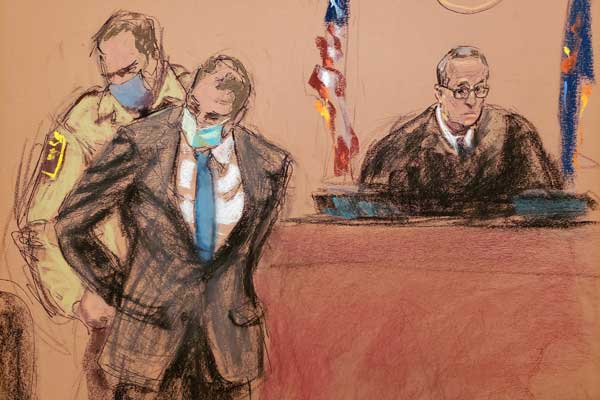The murder trial of Derek Chauvin 2

What you need to know:
- Dr Andrew Baker, a medical examiner who performed the initial post-mortem examination on the body of Floyd stated that his death was a homicide and attributed the death to fatal neck compression as well as positional asphyxia due to the posture in which he was restrained.
The cause and manner of death are often crucial issues in a murder trial. And these, indeed, came up in the trial, in March this year, of Derek Chauvin for the murder of George Floyd.
Dr Andrew Baker, a medical examiner who performed the initial post-mortem examination on the body of Floyd stated that his death was a homicide and attributed the death to fatal neck compression as well as positional asphyxia due to the posture in which he was restrained.
Chauvin’s lawyers however, suggested that Floyd died from complications of drug use, carbon monoxide poisoning and a heart condition. Dr Bill Smock, a police surgeon, however, testified that he found no evidence to support the claim that George Floyd died of a drug overdose.
History of drug use
Ms Courteney Ross, a lady Floyd dated for three years before his death told court of their shared struggle with drug addiction. She told court they were very close and went out to eat a lot and they both suffered opiate addiction that they tried really hard to break many times. Her testimony brought out a crucial point in the trial; the role that drugs did or did not play in Floyd’s death.
Ms Ross told court that she and Floyd had first been prescribed painkillers to ease chronic pain and when the prescriptions ran out they continued to buy pills from others. They had begun a battle for sobriety sometimes avoiding drugs before they relapsed again. In the weeks before Floyd’s death, Ms Ross said she suspected that he had begun using drugs again. Floyd had methamphetamine and fentanyl in his system at the time of his death, according to a toxicology report.
The role of bystanders
A trainer of police officers on provision of medical care told court that bystanders can make it easier for police officers restraining a suspect to miss danger signs that a detainee is in distress and therefore in urgent need of medical care. And according to the trainer this happens when the crowd is very hostile or volatile as was the case during the arrest of Floyd.
Chauvin’s lawyer suggested throughout the trial that the crowd of bystanders, some of whom yelled at Chauvin during the arrest, may have hindered the officer from providing help once Floyd became unresponsive.
Chauvin’s witnesses
Two witnesses testified in support of Chauvin. One of the witnesses, a former chief medical examiner, testified that carbon monoxide from the exhaust of the police car that Floyd was pinned next to might have been a contributing factor.
He also brought out factors such as drug use and the pre-existing heart condition which may have contributed to Floyd’s death. The former medical examiner told court that the levels of carbon monoxide in Floyd’s blood could have been as high as 10 to 18 per cent, although he acknowledged that he had not seen any tests to confirm his assumption.
This evidence forced the prosecutors to call back one of the earlier witnesses, a chest specialist, to rebut this evidence. The chest specialist told court that the carbon monoxide argument was simply wrong. He told court that tests performed showed that Floyd had a normal level of oxygen saturation in his blood and his level of carbon monoxide could therefore, not have been significantly raised.
An expert on the use of force contradicted the testimony of several witnesses called by the prosecution. He testified that the officers who arrested Floyd acted appropriately every step of the way and even said that the restraint used did not constitute a use of force at all.
He told court that the prone position does not typically hurt suspects and that it is an accepted way to control someone during an arrest. During cross-examination, though, he conceded that the restrain did qualify as a use of force under the policies of the Police Department.
One of the witnesses for the Prosecution, the Police Chief, had earlier told court that Chauvin absolutely violated the police departments policy during the arrest of Floyd. He stated, based on his viewing of the videos, once Floyd had stopped resisting, and was in distress as shown, Chauvin should have stopped the restrain that he had applied.
“When Floyd was no longer responsive, and even motionless, to continue to apply that level of force to a person in a prone position, handcuffed behind their back, that in no way, shape or form is anything that is by policy part of our training, ethics or value”, concluded the Police Chief in his evidence.
This statement was one of the most significant and clear cut on the issue of Chauvin’s use of force. Several other witnesses had also told court that Chauvin had acted outside the bounds of normal policing.




